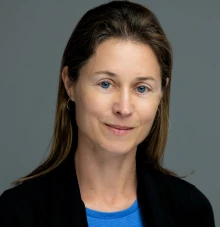When
Presenter:
Dr. Joan-Emma Shea
University of California, Santa Barbara
Abstract:
Tau is an intrinsically disordered protein that plays an important role in stabilizing microtubules. Under pathological conditions, this protein can also self-assemble into fibrillar structures, a process that has been associated with a class of neurodegenerative diseases known as Tauopathies. Interestingly, this protein is also capable of assembling into liquid droplets through a process of liquid-liquid phase separation (LLPS). Using a combination of field-theoretic simulations, coarse-grained models, and atomistic simulations, we present an investigation of the mechanisms of fibrillization and phase separation of this protein. We investigate fragments of Tau that have a propensity to either phase separate or form fibrils, enabling us to shed light into the sequence characteristics linked with these two modes of assembly. Finally, we introduce a 19-residue fragment of Tau that is capable of seeding the fibrillization of full-length Tau, and we discuss the effect of point mutations in modulating aggregation in familial forms of Tauopathies.

Bio:
Joan-Emma Shea received her B.Sc. in Chemistry from McGill University, Quebec in 1992 and her Ph.D. in physical chemistry from MIT in 1997. She pursued her postdoctoral studies at the Scripps Research Institute and joined the faculty at UC Santa Barbara in 2001. She is currently a full professor at UC Santa Barbara. Research in the Shea group focuses on developing and applying the techniques of statistical and computational physics to the study of biological problems. Current work involves the investigation of cellular processes such as in-vivo protein folding and protein aggregation. She is a Fellow of the American Chemical Society and a Fellow of the American Academy of Arts and Sciences. She also serves as Editor in Chief of the Journal of Physical Chemistry A/B/C.
Hosted by: Dr. Michael Brown






